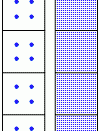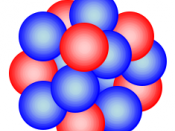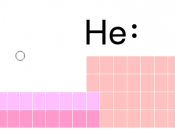Atomic Structure
Atom: smallest particle of an element that can exist by itself
Main 2 things of atom
Orbitals
Electrons (-)
Nucleus
Size of Each (Stadium)
Nucleus = pea
Orbitals = the rest of the stadium
Relative Mass
Protons 1
Neutrons 1
Electrons 1/1839 (1/2000)
Not taken into account cuz it doesn't make a difference in total mass
Atomic # = # protons & electrons (if neutral)
Atomic Mass = # protons + # electrons
All atoms w/ same # of protons = 1 type of element
When mass is higher, usually more neutrons than protons
Neutrons are glue that hold the nucleus together
(+) charge of protons causes them to repel each other
Radioactivity
Element so big that it isn't stable
Radioactive Decay
Gives off protons & neutrons
Becomes more stable
Writing Elements
Write Symbol
Top left = atomic mass
Bottom left = atomic #
Sometimes omitted (implied by symbol)
Old Way of writing it
32-S = 32S
Isotope
Atom that has different # of neutrons
Still same Element
Different Forms of the same element
Atomic Mass = Average of all the different isotopes in nature
1 atom always had a whole # of neutrons
Example:
In nature, 75% of isotopes are 35Cl
25% are 37Cl
(75 * 35) + (25 * 37)
3550/100 = 35.5
<--Average
Brackets around the mass = always decaying
Hard to find out read Atomic mass
Half-Life
Amount of time it takes to decay to ý
Radioactive Substances
Used in C14 dating
Balancing Equations
# of atoms must be the same on both sides
Can't create or destroy matter
Easier to balance if you double odd #'s
Colours
Colour = transition middle
Salts & etc = white


